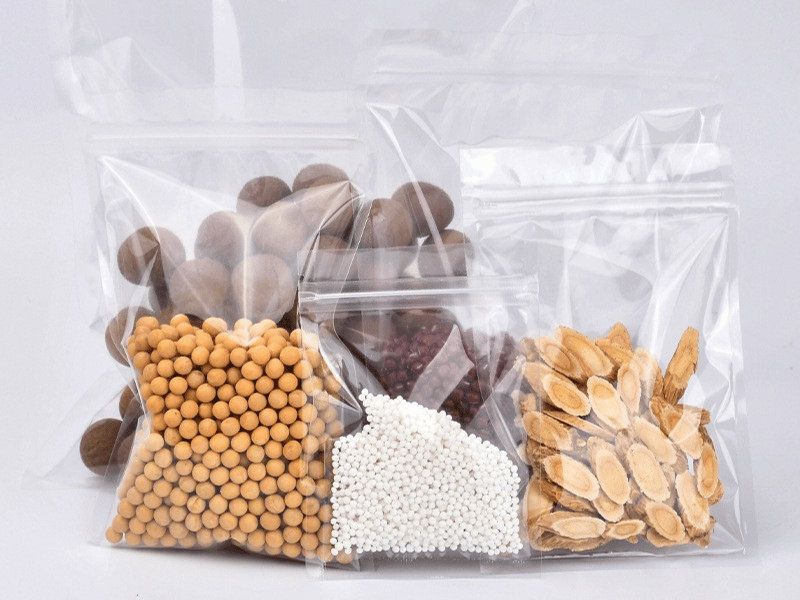When it comes to keeping your food fresh and safe, zipper bags are a household staple that often goes unnoticed. These versatile, resealable bags are not only convenient but also play a significant role in food storage and safety. From preserving leftovers to organizing your pantry, zipper bags offer a range of benefits that can help you maintain a healthier, more efficient kitchen. In this blog post, we’ll explore the various ways zipper bags contribute to food storage and safety, along with some practical tips on how to use them effectively.
1. The Basics of Zipper Bags
Zipper bags, often referred to as ziplock bags, come in various sizes and are typically made from durable plastic. They feature a sealable strip at the top that allows you to open and close the bag easily, providing an airtight seal. This simple yet effective design makes them incredibly versatile for a variety of uses in the kitchen.
Types of Zipper Bags:
- Freezer Bags: Thicker and more durable, designed to withstand freezing temperatures without tearing.
- Snack and Sandwich Bags: Smaller in size, perfect for portioning snacks and sandwiches.
- Gallon and Quart Bags: Larger bags suitable for storing bulk items, leftovers, or marinating meats.
2. Preserving Freshness
One of the primary benefits of using zipper bags for food storage is their ability to preserve freshness. The airtight seal prevents air from entering the bag, which helps to slow down the oxidation process and extend the shelf life of your food.
Vegetables and Fruits:
Store fresh produce in zipper bags to keep them crisp and flavorful. For example, you can wash and dry leafy greens, then place them in a zipper bag with a paper towel to absorb excess moisture. This helps prevent wilting and extends their freshness.
Leftovers:
Zipper bags are ideal for storing leftovers. They take up less space than traditional containers and can be easily stacked or laid flat in the refrigerator. Label the bags with the date and contents to keep track of what needs to be consumed first.
3. Preventing Cross-Contamination
Cross-contamination is a major concern when it comes to food safety. Using zipper bags can help you prevent this by keeping different types of food separate.
Raw Meat:
Store raw meat, poultry, and seafood in zipper bags to prevent their juices from contaminating other foods in your refrigerator. Place the bags on a plate or in a designated drawer to catch any potential leaks.
Prepared Foods:
Keep ready-to-eat foods, such as cooked meals or salads, in separate zipper bags. This ensures that they do not come into contact with raw ingredients that could carry harmful bacteria.
4. Freezing and Thawing
Zipper bags are excellent for freezing food. Their flexibility allows you to maximize freezer space, and the airtight seal helps prevent freezer burn.
Freezing:
When freezing food in zipper bags, remove as much air as possible before sealing. This can be done by pressing out the air with your hands or using a straw to suck it out. Label each bag with the date and contents for easy identification.
Thawing:
To thaw frozen food, place the zipper bag in the refrigerator or submerge it in cold water. The sealed bag prevents water from entering and contaminating the food. Avoid thawing at room temperature to reduce the risk of bacterial growth.
5. Portion Control and Meal Prep
Zipper bags are great for portion control and meal prep, helping you stay organized and make healthier eating choices.
Portioning Snacks:
Divide snacks like nuts, fruit slices, or trail mix into individual zipper bags. This makes it easy to grab a single serving without overeating and is perfect for on-the-go snacking.
Meal Prep:
Prepare ingredients for meals in advance and store them in zipper bags. For example, chop vegetables, marinate meats, or measure out grains and spices. When it’s time to cook, everything is ready to go, saving you time and effort.
6. Marinating and Cooking
Marinating meats and vegetables in zipper bags is efficient and mess-free. The seal ensures that the marinade covers the food evenly, and the bag can be easily turned or flipped during the marinating process.
Marinating:
Place your meat or vegetables in a zipper bag along with the marinade. Seal the bag and massage it to ensure the marinade is evenly distributed. Store in the refrigerator until ready to cook.
Sous Vide Cooking:
Zipper bags can also be used for sous vide cooking. Place your ingredients in the bag, remove the air, seal it, and submerge it in a water bath at the desired temperature. The bag’s seal prevents water from entering, ensuring even cooking.
7. Organizing Your Pantry
Keeping your pantry organized can be a challenge, but zipper bags can help you streamline the process.
Dry Goods:
Store dry goods like pasta, rice, beans, and flour in zipper bags. This helps keep them fresh and protects them from pests. Label each bag with the contents and expiration date for easy reference.
Spices and Baking Supplies:
Use smaller zipper bags to organize spices, baking powder, and other baking supplies. This keeps everything neat and prevents spills.
8. Reducing Waste
Using zipper bags can also help reduce food waste by keeping your food fresher for longer and allowing you to store leftovers efficiently.
Meal Planning:
Plan your meals for the week and store pre-portioned ingredients in zipper bags. This reduces the likelihood of food spoiling before you have a chance to use it.
Bulk Buying:
Buying in bulk can save money, but it can also lead to waste if the food spoils before you can use it all. Store bulk items in smaller portions in zipper bags to extend their shelf life.
9. Safety Tips for Using Zipper Bags
While zipper bags are incredibly useful, it’s important to use them correctly to ensure food safety.
Reusability:
Some zipper bags can be reused if they have not been in contact with raw meat or other potentially harmful substances. Wash them thoroughly with hot, soapy water and allow them to dry completely before reusing.
Microwave Use:
Not all zipper bags are microwave-safe. Check the packaging for microwave compatibility before using them to reheat food. If they are microwave-safe, leave the seal slightly open to allow steam to escape.
Avoid Overfilling:
Do not overfill zipper bags, as this can cause them to burst or the seal to fail. Leave enough space to close the bag comfortably and allow for any expansion if freezing.
10. Creative Uses for Zipper Bags
Beyond the kitchen, zipper bags have many creative uses that can enhance your food storage and safety practices.
Herb Storage:
Store fresh herbs in zipper bags with a damp paper towel to keep them fresh longer. You can also freeze herbs in zipper bags for later use.
Salad Greens:
Wash and dry salad greens, then store them in a zipper bag with a paper towel to absorb excess moisture. This keeps them crisp and ready to use.
Ice Packs:
Fill a zipper bag with water and freeze it to create a homemade ice pack. These can be used to keep food cold during transport or to soothe minor injuries.
Cooking Kits:
Create cooking kits with all the ingredients for a specific recipe. Store each ingredient in a separate zipper bag, then place all the bags in a larger one. This makes meal preparation quick and easy.
Zipper bags are an indispensable tool for food storage and safety. Their versatility, convenience, and protective qualities make them perfect for keeping your food fresh, organized, and safe from contamination. Whether you’re preserving leftovers, organizing your pantry, or prepping meals, zipper bags can help you maintain a healthier and more efficient kitchen.
By using zipper bags correctly and creatively, you can extend the shelf life of your food, reduce waste, and ensure that your meals are always delicious and safe to eat. So, next time you’re stocking up on kitchen supplies, don’t forget to grab a variety of zipper bags – they’re a small investment that can make a big difference in your food storage and safety practices.


